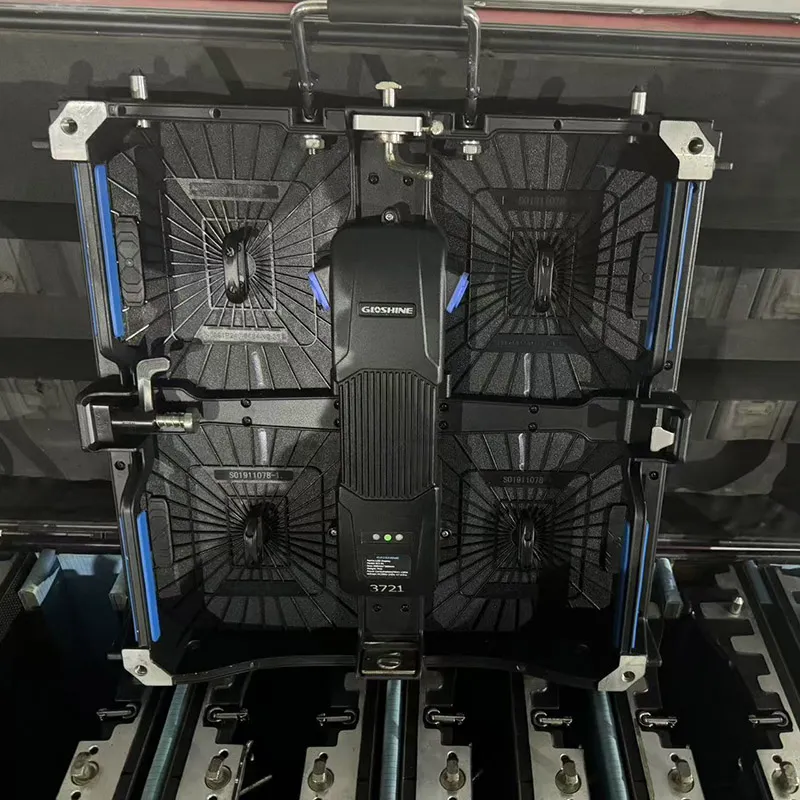Buying Second-Hand Stage Lighting: A Practical Guide
2024-11-29
Second-hand stage lighting is a great option for those looking to upgrade their equipment on a budget without sacrificing quality. Whether you're outfitting a small venue, a theater, or a live music setup, purchasing used lighting equipment can offer significant savings. However, it's essential to know what to look for to ensure you're making a wise investment. Here's everything you need to know about buying second-hand stage lighting.
Benefits of Buying Second-Hand Stage Lighting
1. Cost Savings: New stage lighting can be expensive, especially for high-end brands or specialized equipment. Second-hand lighting typically costs 30-50% less, making it a great option for those on a budget.
2. High-Quality Equipment: Many professional-grade lighting systems can last for years if properly maintained. Buying used equipment allows you to access premium brands like ETC, Chauvet, Martin, and Elation at a fraction of the cost.
3. Variety: The second-hand market is often filled with various types of lights, including moving head lights, LED lights, par cans, flood lights, and intelligent lighting systems, allowing you to find exactly what you need.
4. Upgrade Your Setup: If you have an existing lighting rig, purchasing used lights can help you expand or upgrade your setup without breaking the bank.

Things to Consider When Buying Second-Hand Stage Lighting
1. Condition of the Equipment
- Physical Condition: Check for visible signs of wear and tear, such as cracked housing, rust, or broken parts. Cosmetic damage doesn’t necessarily affect functionality, but severe damage could indicate poor maintenance or handling.
- Operational Condition: The most important factor is whether the light works as it should. Ensure the unit turns on, all moving parts function smoothly (if applicable), and there are no flickering issues or malfunctioning LEDs. If you're buying online, ask the seller for a demo video or test the item in person if possible.
2. Age of the Equipment
- Stage lighting systems can last a long time if well-maintained, but older equipment may not be compatible with newer control systems or technologies. For example, older halogen-based lights might consume more power and generate more heat compared to modern LED lights, which are more energy-efficient and have a longer lifespan.
- Look for the manufacturer's release year to gauge how old the equipment is and whether it's likely to need replacing soon.
3. Lamp Life and Bulb Condition
- In the case of traditional theater lights or moving heads, the bulb life is crucial. Check whether the bulbs or lamps have been recently replaced, as bulbs can be costly and time-consuming to replace.
- LED lights usually last much longer than traditional bulbs, but ensure the LEDs haven’t been dimmed or degraded due to excessive usage.
4. Compatibility
- Ensure the used lights are compatible with your existing lighting control system or DMX controller. Older systems might use different protocols or connectors, so it's important to confirm compatibility before purchase.
- If you're buying a set of lights, check whether they use the same power connectors and DMX channels for easy integration into your current rig.
5. Manufacturer Reputation
- Stick to well-known, reliable brands. Certain manufacturers offer better customer support and spare parts availability. Brands like ETC, Chauvet, Martin, and ADJ are reputable in the stage lighting industry and tend to have good resale value.
- Be cautious of off-brand or unknown manufacturers, as their products might lack the quality or longevity you'd expect.
6. Warranty and Return Policy
- Ideally, buy from a seller who offers a return policy or limited warranty. This will give you peace of mind if the equipment turns out to have hidden faults after you’ve made the purchase.
- Professional sellers or stores specializing in second-hand equipment might offer some form of warranty or service check before selling.
7. Budget for Repairs or Upgrades
- If you're purchasing used lighting that’s slightly older or shows signs of wear, consider the possibility of needing repairs or upgrades. It's a good idea to set aside a portion of your budget for potential refurbishments, especially if the lighting is crucial to your setup.
Where to Buy Second-Hand Stage Lighting
1. Online Marketplaces:
Platforms like eBay, Reverb, or specialized websites for used equipment like GearSource and UsedLighting.com are great places to find second-hand lighting gear. These sites often have customer reviews, product descriptions, and return policies.
2. Local Classifieds:
Websites like Craigslist and Facebook Marketplace can sometimes have local sellers offering great deals on used equipment. Buying locally allows you to inspect the gear in person before purchase.
3. Rental Houses:
Many rental companies sell off older equipment to make room for newer models. These lights are often well-maintained, as they have been professionally serviced regularly. Check with your local rental shops or online rental houses.
4. Music or Event Forums:
There are various online forums where lighting professionals discuss gear, offer recommendations, and sell used equipment. These can be a great source for finding second-hand gear directly from other professionals in the industry.
Popular Types of Second-Hand Stage Lighting
- LED Par Cans: Used for stage washes, creating colorful backgrounds and effects. LED units are energy-efficient and can last for thousands of hours.
- Moving Head Lights: These lights can pan, tilt, and change colors, making them ideal for dynamic lighting effects at concerts or large events.
- Follow Spots: A spotlight used to highlight a performer or area on stage, usually with a long-range beam.
- Beam and Spot Lights: These provide focused beams or spots of light and are great for creating dramatic effects in a concert or theater environment.
- Strobe Lights: Often used for high-energy shows, strobe lights can create flashing, high-intensity lighting effects.
- UV/Blacklight: These lights are popular for creating glowing effects with certain materials or during events like glow parties.
Conclusion
Buying second-hand stage lighting can be a smart choice for those looking to save money without sacrificing quality. However, it’s essential to thoroughly check the condition, age, and functionality of the equipment before purchasing. Whether you're outfitting a small venue or expanding your lighting rig for larger performances, used lights can provide great value when purchased from a trusted source.
By paying attention to the key factors above and buying from reputable sellers, you can enjoy excellent lighting performance at a fraction of the cost of new equipment.


